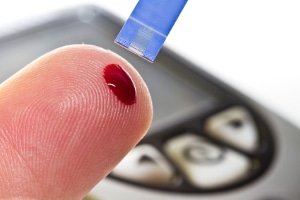
April 21, 2014
Glycemic Control For Fun And Profit
By Michael D. Shaw
According to the American Diabetes Association, 25.8 million children and adults in the United States—8.3% of the population—have diabetes (90-95% are type 2). This includes 18.8 million who are diagnosed and 7 million who are “undiagnosed.” And, if that weren’t bad enough, the ADA estimates that there are also 79 million so-called “prediabetics” in this country. Much more statistical information—and some elucidation of the dubious methodology behind it is available here.
Why dubious? At best, these widely touted statistics are pedal to the metal extrapolations from National Health and Nutrition Examination Survey data, which examines “a nationally representative sample of about 5,000 persons each year.” Given the mind-boggling complexity of human pathophysiology, does anyone actually believe that such a small sample could produce meaningful results?
Evidently, the brain trust behind NHANES, as it is affectionately known, believes it, and offers as proof its “biggest success story.” That would be getting people scared about high cholesterol and its alleged connection to coronary heart disease. Great work, guys! Your biggest success has been disproved a thousand times over, and led to the currently recommended high carb/low fat diet, which causes diabetes, and in turn increases the risk of heart disease. Or, maybe, since 80% of type 2’s are overweight or obese, it is this corpulent state, of which type 2 is merely an adaptation, that is increasing the risk.
Sadly, such loopy number games are not limited to big picture statistics. In fact, the quintessential number game in diabetes is glycemic control—the maintenance of designated blood glucose levels. Newly diagnosed type 2’s are given a litany of complications that can occur, absent glycemic control. And herein lies the rest of our story.
A curious aspect of internal medicine is its obsession with target blood titer values. To be sure, such figures can be important guidelines, but should they be primary goals in themselves? A few years ago, an IM doc of my acquaintance appeared very depressed. One of his patients had died the previous evening, and he was at a loss: “Her numbers were all OK, I just don’t understand it.” In deference to his mental state, I refrained from replying, “Did you think death was optional?”
Given the millions afflicted with diabetes, you’d think there would be plenty of data establishing the importance and validity of glycemic control. Not exactly. A frequently cited study from 1995 examined various morbidities in type 2’s on insulin therapy. The cohort was relatively young and not obese. This work compared the results of a “conventional” insulin therapy group (1-2 injections per day) with a “multiple” injection group (3 or more per day). The multiple group had better outcomes over the six year period.
The authors acknowledged that their findings were contrary to many earlier studies whereby intensive glycemic control in sicker patients was detrimental. Indeed, the famous 2008 ACCORD study (Action to Control Cardiovascular Risk in Diabetes) was stopped when too many of the intensive control group (using oral meds and insulin) died. In the 2008 ADVANCE study, although issues with participants going hypoglycemic were observed, the results here were at least partially positive for the intensive group. Notably, the primary financial support for ADVANCE came from Servier, a major supplier of oral hypoglycemics, and no stranger to drug scandals.
The UKPDS 34 study of 1998 involved overweight type 2’s and did compare intensive drug therapy with diet alone, with respect to microvascular endpoints. The drug group fared better, but the diet was high carb/low fat. The NICE-SUGAR study (2009) showed that ICU patients under intensive glycemic control fared worse, contradicting the Leuven Surgical Trial (2001) although the groups studied were not exactly comparable. There are also studies showing the value of tight glycemic control on type 1’s, usually involving sick patients.
As to type 2’s, the trend of the research is that there is no benefit to tight glycemic control. Bear in mind, though, that virtually all the literature involves patients who already have vascular conditions, and are complicated by polypharmacy issues (patients on several concurrent drugs). In other words, if you seek a longitudinal study of normal weight otherwise healthy type 2’s, who maintain tight glycemic control versus those who do not, you’d be out of luck. And really, why should anyone run that sort of study? Sales of insulin, oral hypoglycemics, and testing supplies are skyrocketing without such data.
